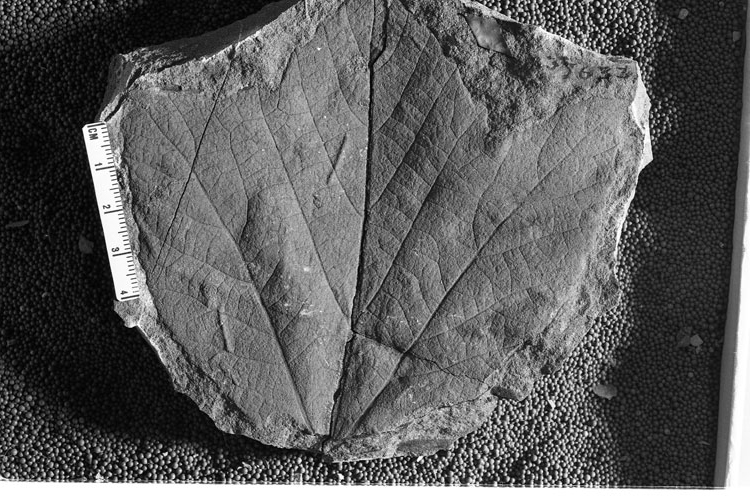Locality
From Hollick (1930) (p. 99-100)
"Yukon River, north bank, about 26 miles below Nulato and about 4 miles below Bluff Point (original No. 2AC264); collected by A. J. Collier and Sidney Paige in 1902 (lot 2983)."
Description
From Hollick (1930) (p. 99-100)
"Leaf broadly trilobate in the upper part, tapering and slightly rounded below to a wedge-shaped base; lobes relatively short, approximately equal in size, the middle one pyramidal in outline, the lateral ones broad and spreading, all with blunt, acuminate apices; margin bluntly triangular-dentate above, entire toward the base; nervation tripalmate from the base, pinnate above, craspedodrome throughout; secondary nerves six on each side, subopposite, subparallel, leaving the midrib at acute angles of divergence; lateral primaries leaving the midrib at acute angles of divergence and curving slightly outward or downward with two or three curved branches on the upper sides and numerous simple or occasionally branched, more or less flexuous branches on the under sides."
From Hollick (1930) (p. 99-100)
"This leaf is referred to the genus Acer with some hesitation, as it possesses some features that are suggestive of the Platanaceae; but the basal portion, which would probably show important diagnostic characters, is missing.
If the generic reference to Acer is correct this leaf represents one of the oldest and most fully developed species thus far recorded in connection with the genus. Acer antiquum Ettingshausen (1867) (p. 259, pl. 3, fig. 17) from the Cenomanian of Saxony, is, so far as I am aware, the only supposed representative of the genus recorded from an equivalent geologic horizon in the Old World, and this species might equally well be referred to the genus Acerites and included in the protean species Acerites multiformis Lesquereux (1892) (p. 156, pl. 34, figs. 1 - 9) from the Dakota sandstone of Kansas. The only heretofore recorded American Cretaceous species are Acer amboyense Newberry (1895 [1896]) (p. 106, pl. 46, figs. 5 - 8) based upon specimens of fruit from the Raritan formation of New Jersey; Acer minutum Hollick (1906) (p. 89, pl 33, fig. 14) a small leaf from the Magothy (?) formation of Staten Island, N. Y.; and Acer paucidentatum Hollick (1897) (p 132, pl. 14, figs. 2, 3) based upon more or less fragmentary leaf remains from the Magothy formation of New Jersey. The discovery of so large and well developed a representative of the genus in the early Upper Cretaceous flora of Alaska is therefore somewhat of a surprise.
The specific name is given in honor of Mr. A. J. Collier, the collector."
